Tosh Berman's Blog, page 225
June 21, 2014
June 21, 2014

June 21, 2014
What I like about writing is noticing the little moments in one’s life and other’s as well. What does appear to be insignificant, can be important if it’s framed in a certain fashion. The songwriting craft of say, someone like Ray Davies of The Kinks is his ability to place emphasis on the trivial and bring it out dramatically in his songs. It is interesting to compare his songs with Pete Townshend of The Who, because basically they share a country as well as a culture. Yet, Townshend focuses on the big statement, for instance, “My Generation, ” and Davies write “Waterloo Sunset.” A beautiful song that captures an intimate moment or a series of moments, which speak softly, but has a great deal of meaning to the listener. Both artists look at the world visually as well as thematic, with respect to class, culture, and how that individual is positioned in that world. The thing with Townshend is that he takes huge subject matters and presents it that sort of represents the everyday person. In a way, he’s like Wagner in capturing the immense emotional moment. Davies on the other hand is more of a sketch artist, or one who draws in pencil, and also deals with a group of people who belong to a specified location and of course a member of the class system of that neighborhood. The Who is international, and The Kinks are… British.
It is also interesting to read “Who I Am” by Townshend and Ray Davies “Americana.” The Pete book is very much grand in its scope of The Who’s history, but I found it lacking a certain amount of feeling or details of people around him at the time. On the other hand, Ray’s book is filled with insightful and detailed observations of the world around him. The Who is great, and Townshend is a fantastic songwriter, but Ray Davies strikes me more of a skillful artist to my liking. He’s in the same league as his fellow British writers such as Noel Coward, Alan Bennett, and perhaps Morrissey. Hearing The Kinks’ classic “Village Green Preservation Society,” one can practically smell the British town or countryside off the vinyl record. The observation of that world is pictorially clear, and you can taste the English tea and the seasons off that album. In something like “Tommy” or “Quadrophenia” one gets the huge scope of one’s life, but again, it lacks specific details.

As I mentioned in a previous post, I’m a huge Osamu Dazai fan, due to his attention to a specific environment, and when I read or listen to a Ray Davies song, I get the same charge out of it, as reading Dazai. I know my limits, and I will never be as good as those writers, but still, I try to reach up to the stars, and will settle for a rooftop at the very least. We all have choices to make, and it is important to engage into that precise choice. Commitment is very imperative, and to follow through that journey, wherever it may take us, is part of the adventure, and not fully the destination. I often admired (but not loved) the poetry of Paul Élaurd, due to its sweeping brush-strokes of a time that must have been difficult for him and the whole of Europe between the world wars and dealing with the Nazi occupation of France. Nevertheless, what was touching in his work was his intense, perhaps even obsessive, love for his wife, Nusch, who I know little about, but I do know that she served the poet as a muse of sorts. So yes, one gets the big picture of his work, but in the end I know a little about his inspiration. A poet can do many things, but for me, I like the poet who sees the world as it is mapped out, and put their stamp on that world as they see it. A lack of detail can make the work seem lazy, and it is difficult as a writer to fulfill that vision that is a clear picture of one’s subject matter, whatever that maybe.
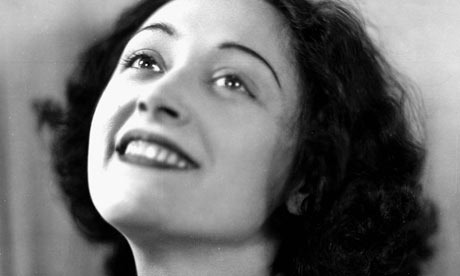
I cannot make comments on the whole world, but perhaps if I focus on the little things around me, one can gather enough information, or even a feeling, that can somehow be of some interest to a reader. Then again, who knows?
Published on June 21, 2014 10:48
June 20, 2014
June 20, 2014

June 20, 2014
Rarely, have I ever been disappointed with a record that was produced by Mickie Most. I’m intrigued by not only the artist who made the record, but also the person, in other words, the wizard, behind the curtain that pulls all the levers and pushes the buttons. Mickie Most had the vision thing down, and the entire 1960s and most of the 1970s he was quite the visionary. I was around 15-years old, and I found myself in London, wanting to make a record. I was in a teenage band, but I wanted to go beyond our Led Zeppelin obsession and make a really heavy commercial rock single. At the time, I had heard rumors that while producing The Yardbirds’ “Little Games” album he insisted that all the songs be around the three minute mark, and this was the era when musicians wanted to expand their song length. Most, at heart, only loved the 45 rpm single, and therefore that is the reason why I love Mickie Most. I wrote a song called “Can the Ass That I'm ” and I had the opportunity to audition the record in front of Mickie Most. He liked it, and I told him right off, that I too believe in the power of a single that is under three minutes. He smiled when I told that, and he organized a session for me for later that week.
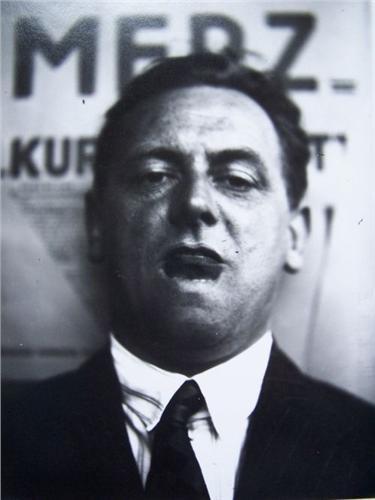
Even though I was a teenager, I had unusual obsessions as a youth. I was totally fascinated with 1920s Berlin, and I thought somehow I can fit that into my image or use the imagery of that period for the upcoming single. That week before the recording, I studied a lot of images from that era, and came up with a great Kurt Schwitters’ college that he did in the 40s. It was out of bound with respect to the era I was interested in, but then again, the beauty of pop is that you can exchange an idea or a series of images and make them your own. The truth of the manner is I co-wrote the song with a German writer by the name of Elisabeth Hauptmann, who actually wrote most of “The Three-Penny Opera” for Bertolt Brecht. It was an odd pairing of me being 15 and she was around her early 70s, but that is also what makes “Can The Ass That I’m” so unique. So writing a song with a woman who wrote for Brecht in Berlin 1920s and making that record for Mickie Most, in addition to having a Schwitter college as its cover - well, how perfect is that!
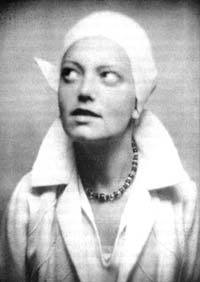
Truth be told, Elisabeth pretty much wrote the song, including the melody. She wrote it as if it was a German cabaret song, and what I did was updated her version of the song to sort of a heavy rock piece. Art works in mysterious ways, but God it worked! When I showed up to the recording session, I was surprised that Most got John Paul Jones to do the arrangements, and also Big Jim Sullivan was going to handle the guitar. As we went through the song a couple of times, I went up to the microphone with my lyric sheet and started singing:
“You know what I can, when I’m such a fan
That such a bland, no-it-all
Can the Ass that I’m and I aim to please
So darling, don’t spread your candy
Before I shake my pop, before my po-pul-ar-ity
A tat-tat-tat You’re so
Delicious, palatable, luscious, and mouthwatering too
Oh baby, can the ass that I’m
Oh baby, can the ass that I’m”
(Tosh Berman/Elisabeth Hauptmann/Bertolt Brecht, ©RAK Music Publishing)
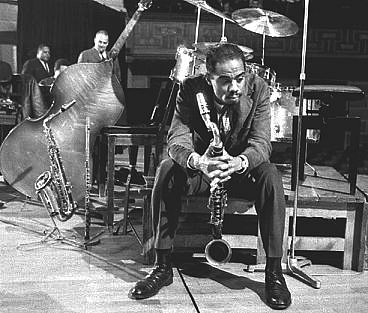
For the b-side, John put together an arrangement of an Eric Dolphy piece from his album “Out To Lunch!” called “Hat and Beard.” I really had nothing to do with the b-side or its recording. But it sounded cool to me, and I was fine with it. Funny enough, listening to it now, it reminds me of Brian Wilson’s work for “Smile, ” and I wonder if maybe he picked up on this record. But who knows, that was so many years ago. The record was never a hit, and it was the one and only recording I have done. At that point, I went back to Los Angeles to complete school (or I should say it finished me) and eventually I worked at a bookstore for many years on the Sunset Strip. One evening, while I was behind the counter, Mickie Most came in and bought some British newspapers. He was looking at the papers, but he did catch my eye, and clearly he didn’t recognize me. Well oh my, can the ass that I’m.
Published on June 20, 2014 11:51
June 19, 2014
June 19, 2014
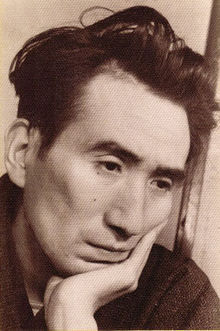
June 19, 2014
Some years ago, working at Book Soup, I was shelving books in the bottom row, which is ground level, when all of sudden a book from above fell on to my head - it was “No Longer Human” by Osamu Dazai. I thought this was a sign from above, and therefore bought and read the book. The narrative of a young misfit in a very structured society, had a profound affect on me, and it put serious ideas that I should be a writer as well as a publisher. Some point out that there are no such things as accidents, but even though it looked like the hand of fate played a role in all of this, I feel I was just lucky to be hit in the head with this book.
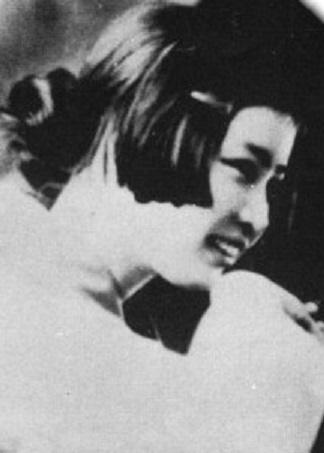
At the time of this “accident”, I was a big fan of Yukio Mishima. I liked everything about this guy - his fascism, his dandyism, his writing, and the fact that he appeared to be a creature who re-invented himself to be Mishima. The one writer that he hated was Osamu Dazai. Due to the fact that he was popular and respected in the Japanese literary world of course, but also that in his eyes, Dazai was a weak character. Keep in mind, Mishima had to re-invent himself from a weakling (in his eyes) to a super figure. Dazai was the total opposite of Mishima. For one, he was very much a failure with respect to his wealthy family. He became a Communist, a failed student, a drug addict, drunk and worst, he tried to commit suicide numerous times, and once organized a double- suicide with a 19-year old bar hostess named Shimeko Tanabe, in which he survived the suicide attempt, but she died.
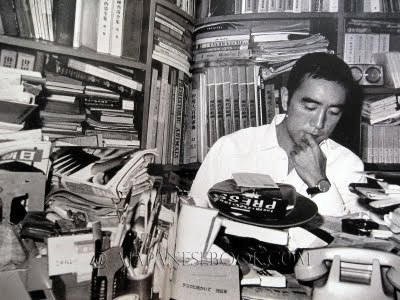
Mishima, right after he wrote “Confessions of a Mask” (an incredible book by the way) was invited to a large ‘literary’ party that was in honor of Dazai. He never met him, and on top of that, there was nobody there except individuals who were highly influential in literature at this exclusive party. Mishima went up to Dazai, among the crowd that surrounded him, and told him to his face - my name is Mishima, and I don’t care for your work.” Everyone around Dazai was shocked to hear such a pronouncement from a fledgling writer to an older literary figure - Dazai just looked at him, and laughed. He told everyone right at that moment “He is only saying that, because he loves me.” This statement struck Mishima hard, in fact he told this story to friends, right before he committed his famous suicide.
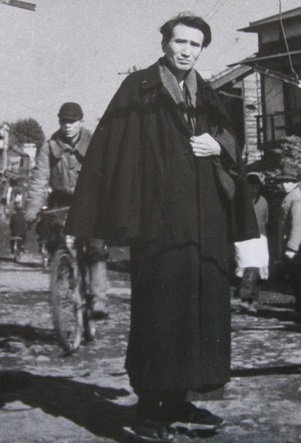
Of course, this made Dazai more enduring to me, and eventually I read everything possible by him that were translated into English. My favorite two books by him are “Self Portraits, ” which is a collection of his short stories and “Return to Tsugaru.” The latter basically started out as an assignment for him to go back to his home town and to document the environmental facts of that area. But with him, you get a memoir of sorts as read as a travel guide. The thing is, like the “Self Portraits” book, it reads like little memoir pieces, is actually fiction. The fact that he could use his sad, pathetic life, and turn it into a charming piece of writing, had a major effect on my own aesthetic. Dazai opened me up to a much larger world.
On one of my many trips to Japan, I went out of the way to go to his studio near Mount Fuji, and it was a very expensive trip for me. Taking a taxi from a small town to his location cost around $100, but it was worth it for me to see one of his manuscripts under glass as well as viewing Mount Fuji from his studio. He wrote this remarkable short story called “One Hundred Views of Mount Fuji” which is about how the great mountain oversees so much of the culture of Japan, and how it can even affect a writer. The last paragraph of the story is about how Dazai, or the main character, was stopped by a pair of tourists who wanted him to snap a picture of them with Mount Fuji in the background. Dazai agreed to do it, but unknown to them, he brought the camera lens up and shot the mountain instead of the tourists. To me, this was such a fascinating comment on an iconic piece of property as well as a mountain’s importance to people.
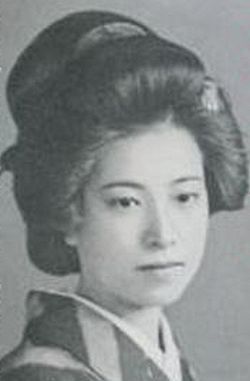
As time went on, his life got messier and messier. It was obvious he was heading to a point of no return. He met a young war widow who had lost her husband after 10 days of married life. Her name was Tomie Yamazaki. He ran off his wife and children to be with her, and eventually they had a child out-of-wedlock. It was with her, that he finally committed suicide - and their bodies were found a week later in a canal near their home. There is a theory that he was actually murdered and forced to drown by Tomie, and then she killed herself by drowning, but that is just a rumor. I have been haunted by a photograph of both of their bodies by the river.
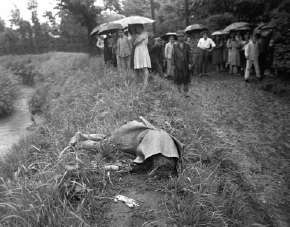
Every time I put pen to paper or push a letter off the computer keyboard I think of Osamu Dazai. From time-to-time I have been asked by a magazine editor for my photograph for the use in a publication, and I usually just send a photo of Dazai, because I honestly feel he represent me more than I.
Published on June 19, 2014 11:33
June 18, 2014
June 18, 2014
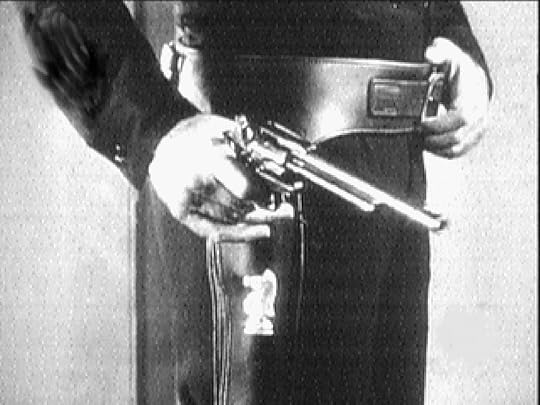
June 18, 2014
Looking back on my life, I obviously wasted a lot of time. But on the other hand I had a sense of immense enjoyment as well. Regret is knowing something and ignoring that urge. I on the other hand never ignored an urge on my part. For instance, recalling that now, I should have never worked in the workforce and become just another drone in the world of financially surviving. There is no crime being poor, but truly there is something indecent about not doing what you want to do. But even then, I enjoyed my life greatly. The one thing that impressed me as a child was watching “Have Gun Will Travel,” for whom the main character Paladin, was a gentleman, a scholar, a connoisseur of fine wine, women, and living the life in wild west era San Francisco. But like in real life, the dualities that we are willing to live in, Paladin makes his money by being a hired gun. Although this is a television show, I find it implications in real life fascinating.

Ted Kaczynski is an interesting figure as well, because on one hand he is a murderer, yet he has an interesting philosophy with respect how one lives in a world where nature is slowly or quickly in some cases are murdered by today’s world. By what we see or hear of Kaczynski, he was or is a remarkable fellow. Accepted to Harvard when he was only 16, and graduated from that school when he was 20. Eventually he went to University of Michigan where he got his PhD in mathematics. His speciality was a branch of complex analysis known as geometric function theory. Also noted by his professors at the time, that Kaczynski’s thesis “Boundary Functions” was so advanced, that only “maybe 10 or 12 men in the country understood or appreciate it.” In 1967, Kaczynski became an assistant professor at the University of California, Berkeley where he taught courses in geometry and calculus. He was the youngest professor ever hired by the University. But alas, he wasn’t a competent teacher. Students stated that he was often stuttering and mumbling during class lectures, and were remote from his students. Without providing a reason to his superiors, he left to wander in the hills outside of Lincoln, Montana. He was living in a cabin that had no running water or electricity. Still, it was a good location to make a bomb or two in complete privacy.
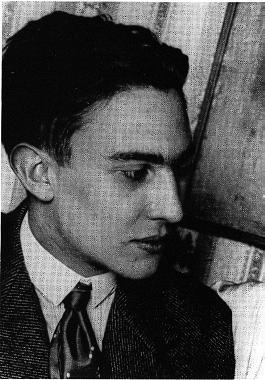
If I had to opt for Paladin and Kaczynski, I would take the third choice, Raymond Radiguet, who was a novelist and poet and a very dear friend to Jean Cocteau. Like Kaczynski, Radiguet was quite young. In fact, he died of typhoid fever when he was only 20 years old. But before that he wrote two remarkable novels “The Devil in the Flesh” and “The Count’s Ball.” As I am just about 60, I am surprised that I didn’t write a book decades ago. Both the lives of Paladin and Kaczynski I sort of can admire, but to live in the shoes of Radiguet, even though his life only lasted a matter of seconds, compared to the other two, his life was a dream. Being supported by the great Cocteau, although one can wonder how much that support was for Radiguet’s talent as a writer or as a gentleman of certain pleasures.
Death at an early age puts a frame around one’s talent and personality. It is just like adding the period after Radiguet. Paladin didn’t exist, but yet his “existence” did, and therefore never disappointed me. The life of Kaczynski could have been perfect as well, but he made choices that I’m not happy with. Regardless of the fact that his message is quite clear, his actions were not. Regardless of the fact that he’s still alive, it is like he’s living a death behind bars. He’s a memory that eventually will be a footnote in true crime history. One doesn’t read emotion in his character, till one realizes that he fell under the charm of a sentiment, that he will never successfully spread, due to his heartless sense of justice. Rage can be a beneficial tool, but it is best to use it for the pen on the paper.
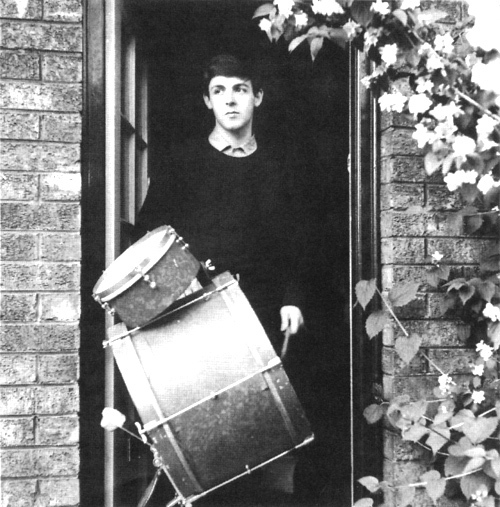
The one true perfect moment for me is when I watched The Ed Sullivan show after “Have Gun Will Travel” and realizing what will come next would for at least a moment or two, brought a huge group of people together by a few Yeah, Yeah’s - and the world of black and white turned into a beautiful technicolor point of view of the planet. But alas, like a lot of dreams it turned sour. For me, I have to live in a life projected by a light beam, because I can't deal with the disappointments that surround one's life. Yet, with hindsight, one can cherry pick the highs and can leave the lows in the trash bin that is history.
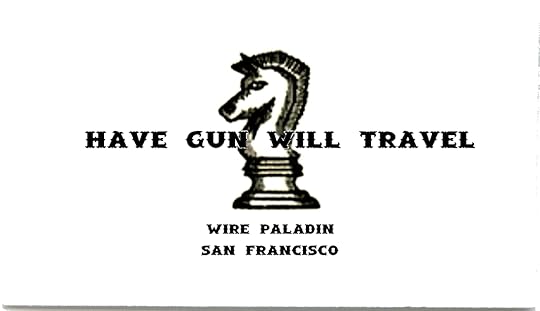
Published on June 18, 2014 11:30
June 17, 2014
June 17, 2014

June 17, 2014
Without a doubt, life is difficult. Time is a problem. I would wish to state I fear the horror that is out there, but mostly I just groan, and put my head under the pillow. As a kid, I was surrounded by posters of prints by M. C. Escher, that showed the possibility of infinity in tightly closed terrain. Either his work was about expanding your consciousness, or for me, it was being caught up in a maze that is a horror show. In other words, the 21st century conveys the feeling of being stuck in an endless loop of Catch-22 situations, which are not only being trapped by contradictory rules, but it seems life and nature itself has adapted to the phrase.
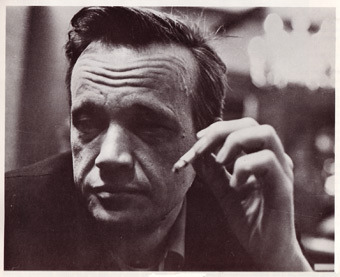
Around the same time when I was surrounded by Escher posters, I got into Wally Wood’s work for Daredevil. I was intrigued that a blind man can be a superhero, and often I would close my eyes for a significant period of time, just trying to imagine that type of world. Yet, I realized that being sightless, itself is a maze of sorts. When I opened my eyes I pretend to see the world in a new light. I have to say I was slightly hurt when I read Wood’s statement “If I had it all to do over again, I’d cut off my hands.” I then closed my eyes again, trying to imagine a world that is better for me and maybe for you as well.
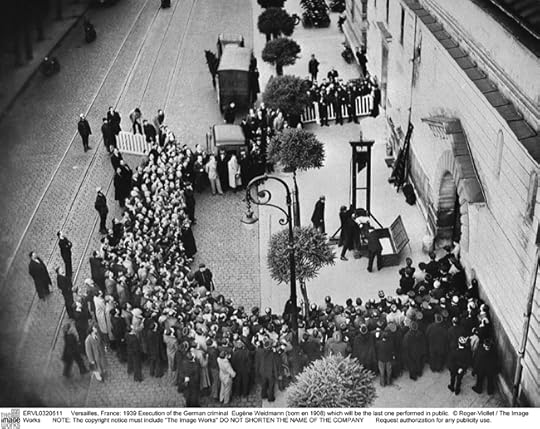
The last public guillotining in France was in 1939, which surprised me for some reason. Seeing someone’s head being cut off in bright daylight in front of an audience strikes me as being offensive. Surely the French and others, got that out of their system in the French Revolution. Did it need to go on till the middle of the 20th century? As time marches on, I find myself surrounded by death, dead things and dead people. Often, I wonder if I’m dead, but my depression makes me feel alive. I embrace feeling. Even if it is bad feelings, I rather have that, than no feelings. I shut down eyes and I imagine that I was at the guillotine party, and I wonder what I would have for lunch that day.
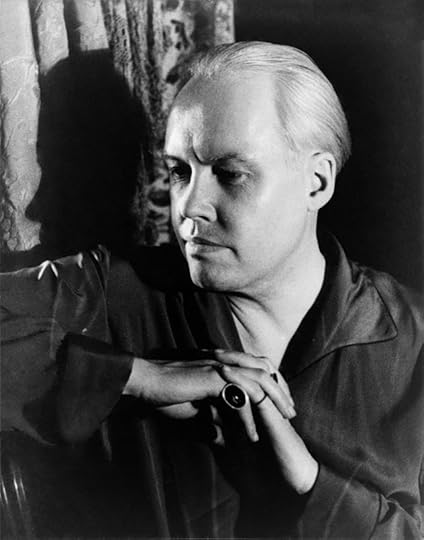
Last night I had a dream where I was wondering through Harlem with Carl Van Vechen, and as he was taking photographs, I noticed that he didn’t have any film in his camera. I didn’t know how to approach him regarding his mistake, but I wanted to somehow bring this to a positive light - and alas, I woke up this very morning feeling a tad depressed and not sure what I can do this morning. As one knows by now, I have been writing a story a day, and I do that to give myself a structure, after leaving a job that I had for 25 years. It felt like I had a hand chopped off, and now with my remaining left (thank god) hand I write down my thoughts, even though they’re pathetic in parts, it keeps me "up" in a funny “down” way.
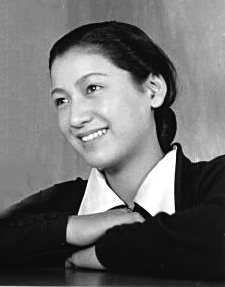
The one image I do have when I close my eyes is seeing the face of Setsuko Hara. In her films, especially the one’s directed by Yasujirō Ozu, she often plays a woman who is confronted by the new, when still facing old transitional situations. To be a modern woman, yet tied to traditional culture, which will or can eventually kill her. She exists to be alive in a moment of time that is clearly stated if she will be OK. But as a fan, I know she will live and be able to withstand all the horrors that are in her filmic life. With that, I feel encourage to wake up fully and jump into the pool that is my life, and I will do so with my eyes wide open.
Published on June 17, 2014 12:14
June 16, 2014
June 16, 2014

June 16, 2014
Passiflora incarnate, better known as Maypop, is a commonly known wildflower in the mill town Alcolu, located in South Carolina. It’s a very beautiful flower. Yet it has its medicinal uses, such as treating nervous anxiety and insomnia. But, here the main interest of the flower is its natural beauty. In a small town one dies for a little aesthetic attention of a flower growing wild in its area. On March 23, 1944, Betty June Binnicker, age 11 and her best friend, Mary Emma Thames, age 8 went off looking for the Maypop flower on their bikes. As they passed the property of the Stinney family, they asked young George Stinney and his sister Katherine if they knew where to search for Maypops. History doesn’t know what the answer was to their question, but nevertheless the two little girls disappeared, and were found the next morning in a ditch filled with muddy water. Both were dead, and both had suffered severe head wounds.
The young African-American teenager, George, that the two little girls asked about the flowers before their death, was arrested on suspicion of murdering the two girls. The only thing connecting the 14-year old boy to the murder, was that he talked to the girls, and due to that fact, if even that is true, is the testimony of three police officers. Who it seems, testified at the adolescent boy’s trial that lasted for barely two hours.

With respect to young George’s immediate arrest, his parents were given the choice of leaving the town, or getting lynched. George’s family was forced to flee, leaving their young son with no support during his trial, and of course, his execution. No physical evidence was brought up in the trial, and the police officers as well as the jury were all white, which of course was perfectly normal for a segregated community. The entire trial, including selecting the jury, took one day. George’s court-appointed defense counsel was a tax commissioner, who at the time, was campaigning for election to a political office in that town. The only other people who testified at the trial besides the three police officers were the man who discovered the two bodies in the muddy ditch and the two doctors who performed the post mortem examination. The police claimed that George confessed to the crime, but he claimed that wasn’t true, and there was nothing on paper or a signed confession presented to the court. The lawyer for George, did not contest or questioned any of the witnesses in the case. The entire trial from start to finish took 2 and a half hours. The jury spent ten minutes to deliberate, which they returned with a guilty verdict.
George Stinney’s execution took place on June 16, 1944, in Columbia, South Carolina. Ironically, Columbia is known by its citizens as “The City of Dreams.” George at the age of 14, was led into the execution chamber with a Bible under his arm. Due to his size, they had to use that Bible as a booster seat on the electric chair. Since at the time of his death, he was 5 feet 2 inches tall and weighed 90 pounds. Technically his size was too small for the electric chair, so the authorities had some difficulty in strapping him to the chair. Also difficulty in fitting the face-mask as well. The mask kept falling off his face, revealing his wide-open eyes and saliva coming from his opened mouth. It took two jolts of electricity before the boy died. From the time of the actual murders to George’s execution was exactly 81 days. So in other words, just under two and a half months.
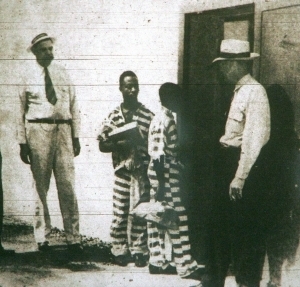
Interestingly enough a pastor from the area named Mr. W. Wallace Fridy wrote a letter on the behalf of George, and the then Governor of South Carolina, Olin D. Johston wrote back to the pastor claiming that George raped the dead older girl, which there were no evidence of sexual play whatsoever. In other words, the letter was a complete lie. What interests me is the way the whole system worked together to kill George Stinney. Hand-in-hand they all went and marched the poor young teenager to his death. I have a grainy newspaper photograph showing Stinney and another prisoner entering the death house in the state prison. Both were executed on that day.

I spent yesterday reading a biography on Bertolt Brecht and watching the 1931 film version of “The Threepenny Opera.” The film and musical exposes how a system works, and how each member of society plays the role that will make the machinery go into motion. Brecht saw the world as being controlled by police, gangsters and thugs, and in turn, when there is a need, both groups will work together for their “common” good. One has to think why did this young boy had to die, and be treated in such a manner by the entire town, the whole district and eventually the state of South Carolina. Clearly this was a trial that had no claims to the truth, because there was no evidence that George killed those unfortunate girls. But as a culture, or a system, it was needed to have George killed in that electric chair. Even using his Bible, as a prop to lift his body to the electrical wires. Time has passed, but nothing has changed. A system in place is a system that needs to be questioned.
Published on June 16, 2014 10:41
June 15, 2014
June 15, 2014
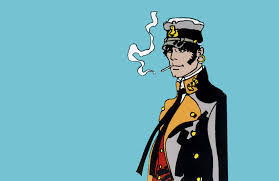
June 15, 2014
Time is just like a dream. Loving you is a world that is strange. Who knows if it is real, or both dreaming of. Seemed to be a new day now, but it can be a beginning of a love. The oddness of my feelings, as it is now, is like a wisp of a dream I had last night. I can’t recall all of it, but I believe I woke up with a feeling of bitterness. When I go to an image of you on Facebook, it is always a fleeting feeling. Perhaps due that you only have images of flowers and pets on your page, but once in a while someone posts an image of you. I should have captured it, because you eventually took it off your page. Loving you made my whole life change. Loving you, I could not grow old. On the other hand, my memory of you exists, and therefore maybe you never existed.
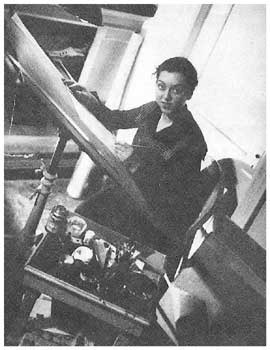
I lived my life in countless comic strips. Thomas the Engine took me to places that I could only dream about, but alas, even then I realized it was just an illusion. As I got older, I went on adventures with "Corto Maltese," and eventually ended up in Siberia and the Salt Sea. When Maltese realized he had no fate line on the palm of his hand, he carved his own with his father’s razor, determining that his fate was his to choose. A pirate’s wit is a young boy’s fantasy of a better world, yet, if I remember correctly, you were devoted to “Teena.” I had to get a book at The Secret Headquarters in Silver Lake, to keep it as a memory of our disagreements. “Teena” was perhaps the first teenager in the comic strips, and yet, we were much older than that, and yet we bonded with fictional characters, that occasionally we forgot that they didn’t exist. In our world, it was a precious one, where we had to balance our desires equally, yet owing to our temperament, we fought for our heroes quite dramatically.
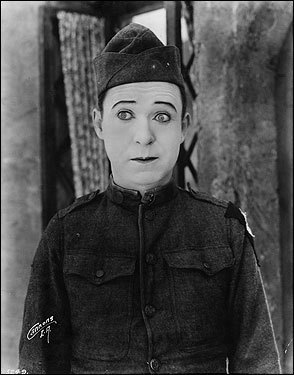
You often treated me like I was a Harry Langdon character, a man who you felt was childlike, even an innocent who is wondering into a dark forest by himself. Yet, I was devoted to Johnny Hallyday and Harry Nilsson, both artists that were easy to be misunderstood. I often think of the Nilsson line “Well, in 1941, the happy father had a son And in 1944, the father walked right out the door.” Well, that’s the way it was. You had an obsession with Waylon Jennings, due to him being handsome, yet, I think the only recording of his that I like is “MacArthur Park.” I remember how shocked I was, that you never heard his recording of that song. At this time, I realize the distance between us. Spring was never there waiting for us. It seemed it was just the fall and winter. I have a clear memory of your yellow cotton dress on the ground around your knees. That’s my lasting memory of you.
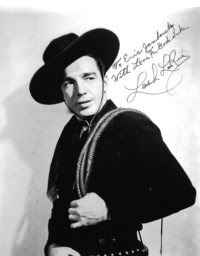
Sometimes the memory is too painful. I remembered when I was in elementary school, and we had a festival on the premise. They built booths and brought a ferris wheel on the school grounds. I didn’t think I could take it. It’s the only memory I have of that you were you were not part of. Lash LaRue, a cowboy star of my youth made an appearance, and with two quarters you could buy his 8x11” black and white photo with his name stamped on the image. At the time, I was so excited. It was almost if he took his whip out and did a presentation of some sort. A friend of mine who was there, told me that this didn’t happen. He was truly there, but all he had with him were a dark suit and a black cowboy hat. Even that, my images of my past life are fading into a world of my own making.
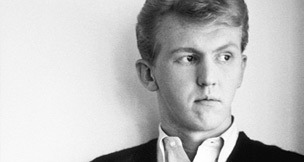
Published on June 15, 2014 11:35
June 14, 2014
June 14, 2014
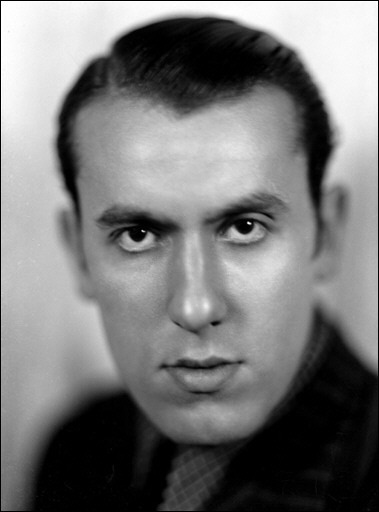
June 14, 2014
The phrase “Un poète doit laisser des traces de son passage, non des preuves. Seules les traces font rêver” (A poet must leave traces of his passage, not proof. Only traces are dreaming) come to mind with respect the reason why I put pen onto paper. Every day I wake up early with a shattering dream of some sort. I usually can’t remember the dream, but it leaves me depressed, and it takes an hour or so for me to shake that depression out of my being. It is somewhat like using a rag to soak up liquid and then wringing the cloth to do away with the moisture. Usually by my first cup of coffee, I ‘m free of morbid thoughts and then continue with my day.
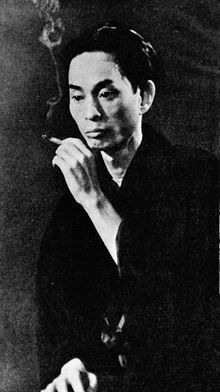
For the past year, I have been working on a literary journal of young writers called “The Artistic Age.” Being an editor is difficult, because I tend to be a writer that thinks about his work first, and everything else comes second. I was approached by friends to co-edit this journal, but now thinking, this was not a good idea. For one thing, I’m much older, and I think age is a significant factor in writing. Of course there is the cliche of having experience to draw from, but in my case, as I get older, I feel more stupid. Instead of things becoming clearer, it becomes more muddy-like. My memory is sharp, but I can see I choose to re-edit the facts in my life, and rely on my dreams more and more. Even though my dreams are faint at best, I know my true identity speaks in a deep sleep. Once I wake up, it is like emerging from the deep waters to air, and I have the memory of fighting for air. Therefore I have to refine my life with my dreams to be whole.
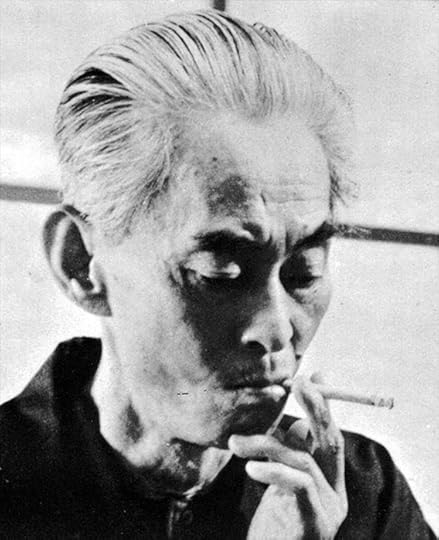
There have always been a wall around me to distance myself from those who want to get close to me. I need the space around me so I can fill it with my inner-thoughts. Each time I throw the dice, to find out where I am heading, opens up another territory for me to explore. Therefore that is the reason why I write. For me, the boundaries must be established, and therefore I just want to write narratives that are only on one page. What I find the least interesting part of a narrative is the order of beginning, middle and the end. To be honest I don’t like to have endings in my stories, because it sets me in a world that is restricted and I need, at the very least, the ability to be seen beyond the wall of my own making.
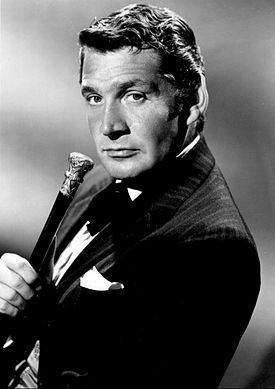
As a child I was fascinated with the television series “Bat Masterson, ” due to the fact it was a western, yet the way the actor Gene Barry played him, he was a man out of his time. The Dandy aspect also appealed to me, because he looked so superficial against his surroundings. Over the years, I have built my character up to be sort of dream-like version of Masterson. Even though clearly, I can see myself that there is a sizable distance between Bat and the writer of this journal - nevertheless it shows up in my dreams, which as I mentioned causes a certain amount of disappointment and dread. I can only hope that what I will continually run to the border of dream and life, and therefore, and hopefully, can master the two territories that contain yours truly.
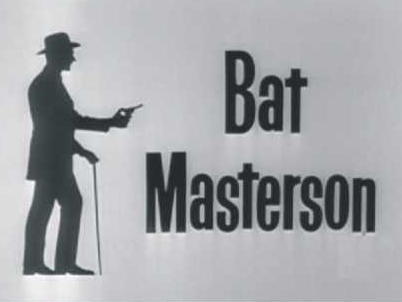
Published on June 14, 2014 12:22
June 13, 2014
June 13, 2014
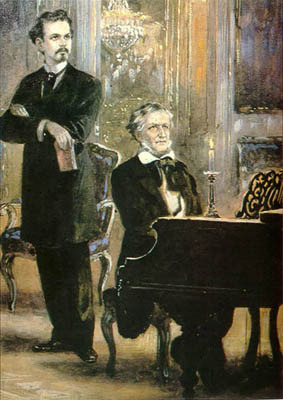
June 13, 2014
I’m a member of the Rhymers’ Club, which is a bunch of us poets who get together to read, write and recite poetry to each other. It’s a private group, and we often meet in complete secrecy. From time-to-time we have made a journal, but the printing is only enough for membership and no one else. So in other words, we produce literature for only ourselves and no one else. Everyone in the group is obsessed with keeping the poetry as pure as possible. To be honest, I’m even forbidden to discuss or write about this group, even in this journal. Nevertheless I feel compelled to expose myself, because when you come upon such perfect moments, I have a tendency to want to share them with someone.
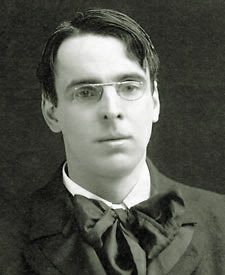
The Rhymers’ Club started in London about 125 years ago, where meetings took place in various private homes and pubs. Ever since then there is a secret signal between members where they shake hands, but one member scratches the palm of the other’s hand, by their middle finger. Sometime identities are covered up either by fake names, and in some cases, by wearing a disguise. I remember in our last meeting, one of us was even dressed up as a woman, not in a sexual sense, but just to throw off anyone trying to find out the identity of the figure. It has been rumored and almost common knowledge among its members that the Irish poet W. B. Yeats was an early member of this group. In fact, he may have organized the first meetings, and invented the secret handshake among its members. Oscar Wilde was rumored to be a part of the group as well, but there is no solid proof of that.
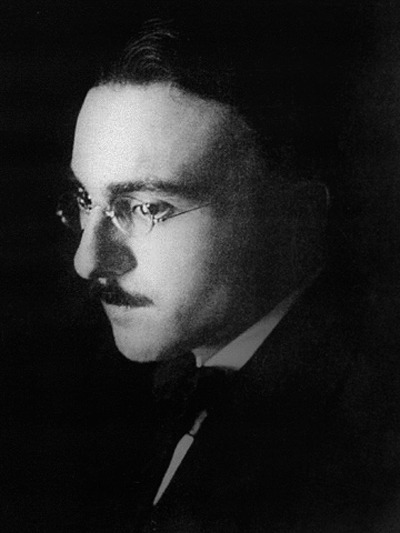
The meetings, to this very day, are arranged by the throw of the dice. If certain numbers come up, that is the date for the get-together. An ad is placed in a publication announcing the date, time and location for the meeting. Of course, all of this information in the ad is under a secret code, that can only be read by its members. Usually by a rhyme of some sort. Last night I went to a meeting at the 321 Lounge at Taix, where we have a table reserved for the group under the name “Basil Rathbone.” Once there I approached all the members with the secret handshake, and then we got down to business to discuss the poet Fernando Pessoa. In each meeting we agree to discuss a specific poet, and debate about their work. Afterwards we share our poetry, and each member can read up to five poems to the group. We discuss the work, and eventually make plans to make a journal, which again, we only print up enough copies for the group and no one else. The journal is called “The Rhymers’ Club, ” and we also encourage its members to either save each issue, or destroy it, to make sure it doesn’t leave the group.
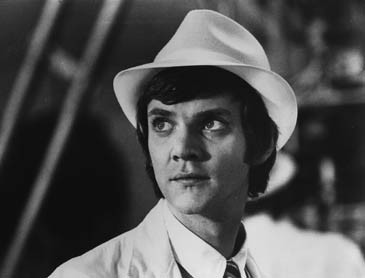
Every so often there are poets in the group, that are quite famous, but not for writing poetry. The comic actor Paul Lynde was a member of the group right up to his death, and he was once on a TV program called “Hollywood Squares” where he often gave messages on the show for the members. Of course it was coded, and for anyone listening in, they would think they were just listening to a joke, but that was not the case whatsoever. It has been stated within the group that Lindsay Anderson’s film “O Lucky Man” is a coded version of The Rhymers’ Club” and that the film’s star Malcolm McDowell who wrote the story, may have been a member, but more likely his father who owned the pub, where some of the secret meetings took place, either was a member himself or at least knew about the group.

What is still an ongoing rule for the group is that only males can belong to The Rhymers’ Club. Occasionally we allow only one woman in our meetings, and this only started when legendary photographer Jacques Henri Lartigue was part of the group. It was almost a fetish for him to bring an attractive woman to the group’s meetings. Ever since, for tradition sake, we permit one member of the group to bring a woman of his choice into a meeting. But she is not allowed to participate in the discussion nor in the readings of the poetry. Also her identity is not exposed to the members, and she is often just called “The Muse, ” among our members.
We do have a membership card, but it has no name or wording. It is an image of King Ludwig looking over Richard Wagner as he plays the piano. For whatever reasons, we don’t know why this image was chosen. It has been rumored that Yeats himself chose this image as a membership card, to be used to announce oneself to another member. Secrets are the foundation of our culture. We must keep them. After reading this, please destroy it.
Published on June 13, 2014 11:22
June 12, 2014
June 12, 2014

June 12, 2014
When I visited Amsterdam sometime in the early 90s, I began to keep a daily journal. I had obsessive thoughts that when I leave this world, there will be no record of my existence. I can’t accept the thought that I have been here for sixty years, and yet, there is nothing to show for it. The journal would not be made for those who are with me now, but for future generations to know what it was like to be “me” in the 20th and 21st century. A series of decades that were full of insecurities and alienation. Not only emotionally, but also the fact that one could not possibly connect to the world around them. It angers me that people participate in the voting system, which is obviously a farce. Most cases you are choosing Heckle over Jeckle and you are getting heck results where one moves a mere inches instead of yards.

I often felt like Cinderella in that my life was pushed around by people I have no control of. I felt ugly, yet when I see myself in a mirror I think I do have some good features, but alas, people can’t look beyond the image, and therefore I decided “OK, if that is what they want, I’ll give them the image.” I commissioned a painter to do a portrait of me, but dressed in the style of the late 19th century. Since I just wanted to convey a sense of false riches, I insisted that the portrait should be about something of one's class and as a gentleman of wealth. I had to sit for the painting for at least 8 hours. It wasn’t so repentant of a process. I sat in my seat staring at the painter, and meditated as the time slowly moved along. One of my favorite films is “Goldfinger,” and I insisted that the image of the golden girl be placed somewhere behind me. He placed my portrait as someone sitting on the end of a bed, with the golden girl either dead or laying on the top of the bed. For me it had some erotic overtures, but often death and life are sort of sensual tango, and one gets charged from it.

I slowly realized that I can live a life, but since I’m writing the journal as well as having my portrait done, I can control my narrative as it happens. The world is one thing, but with my participation in that world I can somehow make it “my” world. The obsensity of someone like Hermann Göring living off the art of the Jewish population that he wished to obliterate, and riches that he never earned but stolen, strikes me as an act of desperation in trying to make yourself a presence on this earth. I must learn not to imitate someone else's mistakes.

One of the best dressed men that made an impression on me is the British blues singer Long (due that he was tall) John Baldry. The essence that he stood out due to his height, which could be regarded upon as a minus, but alas, his dress sense or style turned that into a plus. I imagine myself in his role as a dandy, and not someone who surrounds themselves from other’s wealth. If I make a mark on this world, it will be through my character - no matter how damage that may be.

Published on June 12, 2014 09:55



